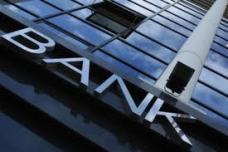Currency interventions and their impact on the Forex market.
 Any market is sensitive to any change in demand or supply, and the foreign exchange market is no exception.
Any market is sensitive to any change in demand or supply, and the foreign exchange market is no exception.
It is these two factors that are fundamental in the formation of the value of currency pairs. It should be noted that in order to change the exchange rate, a significant change in the demand (supply) of the currency in question is required.
The volumes must be so large that they are noticed by other market participants. In this case, they will begin to make transactions in the direction of the emerging trend, thereby accelerating its movement. An ordinary trader cannot make a large transaction, but such participants as national banks are quite capable of making transactions worth several billion dollars or operating with larger amounts.
Foreign exchange intervention is the actions of national banks to buy or sell foreign currency in order to change its exchange rate in relation to the national monetary unit.
Reasons for foreign exchange interventions.
1. Maintaining the exchange rate of the national currency - after all, a stable exchange rate is an indicator of well-being in the economy and financial sector.
It is quite difficult for a country with hyperinflation to obtain loans from the world bank, and the constant depreciation of the exchange rate leads to inflationary processes. Therefore, the country’s leadership and the Central Bank decide to sell a certain amount of foreign currency on the interbank exchange (most often the US dollar is this currency).
With this type of intervention, national banks usually act according to two scenarios:
• Satisfying the demand for existing applications, in this case the national currency exchange does not change much, only it stabilizes.
• Coming out with our own offer at lower prices than currently exist on the market.
2. The second reason is less common, but it is precisely this that is the basis for interventions in the Japanese Yen and the Swiss franc.
The leadership of these countries has been concerned about the strengthening of national currency exchange rates for several years now and often takes measures to weaken it.
It should be noted that this is much easier to do than to cause an increase in the price of the national currency. The question arises, what is this for?
It's all about the cost of goods produced by these countries. After all, if the country’s currency exchange rate has increased by 10%, this means that the price of goods produced in this state has risen by 10% and it has become more profitable to find an alternative. Let's look at an example of such intervention on the USD/JPY pair.
The Bank of Japan is buying $50 billion for the Japanese Yen, and it is not doing this all at once, but in several stages. At the same time posting information about ongoing actions in the media. As a result, the supply of the Japanese Yen increases and the demand for the American dollar increases, which causes the dollar to rise and the yen to fall. And if we look specifically at our currency pair, then an upward trend .
Currency interventions have long been an excellent time for speculation on Forex; some traders manage to make fortunes at these moments. The main thing is to receive information about the beginning of this event in time.
